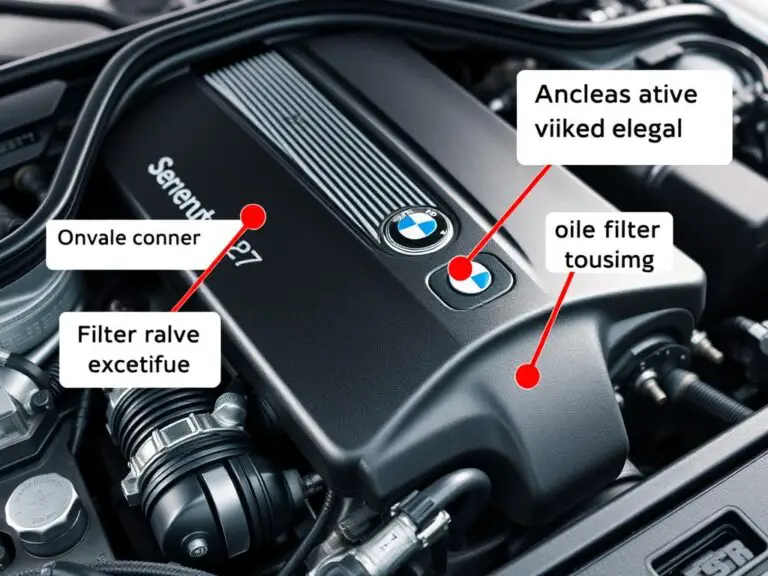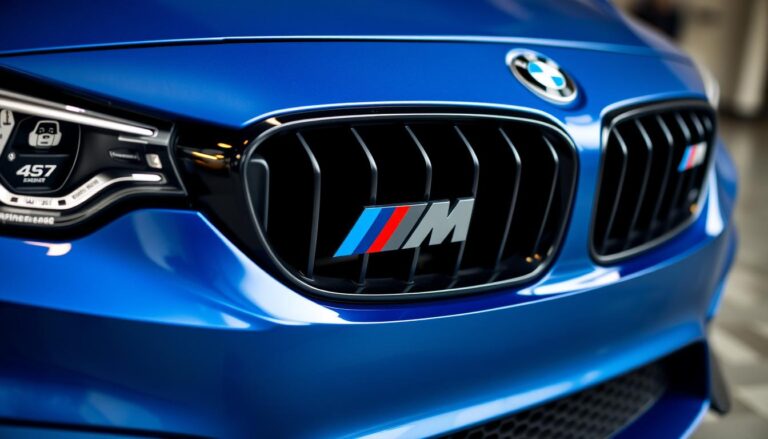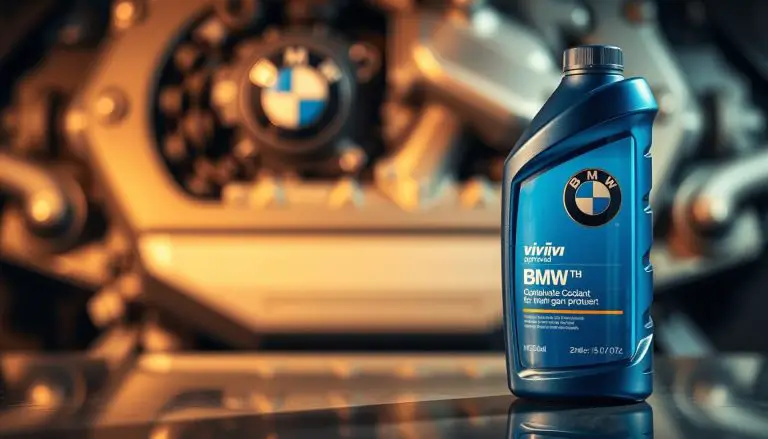The act of charging your BMW battery correctly is paramount for its longevity and the vehicle’s performance. Irrespective of whether you possess a newly acquired BMW or a pre-owned one, grasping the nuances of battery charging can significantly prolong its life span.
BMW models, each with its own battery type, necessitate a tailored charging approach. This article delves into the various BMW battery types, offering detailed, step-by-step guidelines for their proper charging.
Key Takeaways
- Understand the different types of BMW batteries and their charging requirements.
- Learn the proper steps to charge your BMW battery.
- Discover how to maintain your BMW battery’s health.
- Find out how to extend the lifespan of your BMW battery.
- Understand the importance of proper battery charging for optimal vehicle performance.
Understanding BMW Battery Systems
The complexity of BMW battery systems necessitates a profound comprehension for the upkeep of your vehicle. These systems, replete with advanced technologies, are designed to optimize performance and efficiency.
Types of Batteries Used in BMW Vehicles
BMW’s fleet employs a variety of batteries, including lead-acid, Absorbent Glass Mat (AGM), and lithium-ion. Each battery type is tailored to specific models and applications, reflecting BMW’s commitment to innovation and performance.
- Lead-Acid Batteries: A traditional and economical choice, these batteries are prevalent in numerous BMW models.
- AGM Batteries: Exhibiting superior performance, AGM batteries cater to vehicles with elevated electrical requirements.
- Lithium-Ion Batteries: Incorporated in hybrid and electric BMWs, these batteries boast high energy density and efficiency.

Battery Management Systems in Modern BMWs
Modern BMWs are equipped with advanced Battery Management Systems (BMS) that oversee battery performance. The BMS ensures the battery operates within safe parameters, thus optimizing its lifespan and performance.
| BMS Function | Description |
|---|---|
| State of Charge Monitoring | Tracks the battery’s charge level to prevent overcharging or deep discharge. |
| Cell Balancing | Ensures that all cells within the battery pack are balanced for optimal performance. |
| Temperature Control | Manages battery temperature to maintain optimal operating conditions. |
Signs Your BMW Battery Needs Charging
A BMW battery’s depletion can signal through several critical warning signs, necessitating prompt attention. Recognizing these indicators is crucial to prevent escalation into more severe malfunctions.
Warning Indicators on Your Dashboard
BMW’s contemporary dashboard systems are designed with advanced warning functionalities. A low battery condition is often heralded by a plethora of warning lights or messages. Notable among these are:
- The battery warning light, typically depicted by a battery icon
- Alerts such as “Battery Care” or “Battery State: Low”
- Additional warning lights that suggest problems with the charging mechanism
These dashboard alerts serve as the primary defense against battery-related malfunctions. Neglecting them could result in a vehicle’s failure to start or breakdown.
Performance Issues Related to Low Battery
A battery’s low charge can manifest through various performance-related symptoms. Common manifestations include:
- Dim or flickering headlights and interior illumination
- Slow engine crank or challenges in starting the vehicle
- Malfunctioning accessories, such as the radio or wipers
Should you encounter any of these performance anomalies, it is imperative to verify the battery’s charge status.  Timely intervention can avert substantial damage to your vehicle’s electrical infrastructure.
Timely intervention can avert substantial damage to your vehicle’s electrical infrastructure.
Essential Tools and Equipment for Battery Charging
The selection of appropriate equipment is paramount for the correct charging of your BMW battery. Utilizing the correct tools not only optimizes the charging efficiency but also mitigates potential risks.
Recommended BMW Battery Chargers
Opting for a recommended BMW battery charger is essential when charging your BMW battery. Chargers designed for BMW batteries are crafted to align with the battery’s specifications, guaranteeing a safe and effective charging cycle. Models such as the BMW-approved battery charger and others compatible with your vehicle’s battery type are highly recommended.
Additional Tools You May Need
In addition to a reliable battery charger, several tools may be necessary for the charging process. These include a multimeter for voltage checks, gloves for safety, and safety glasses to protect the eyes. Possessing these tools can significantly enhance the charging process’s efficiency and safety.
Safety Precautions Before You Charge a BMW Battery
Charging your BMW battery necessitates prioritizing safety, as improper handling can precipitate severe consequences. Acquaintance with the requisite precautions is imperative to avert accidents and vehicular damage.
Personal Safety Measures
Engagement with batteries mandates an unwavering emphasis on personal safety. Essential precautions include:
- Don protective attire, encompassing gloves and safety spectacles, to safeguard against electrical shock or acid splashes.
- Guarantee the environment’s ventilation to avert the aggregation of explosive gases that batteries may discharge during charging.
- Prohibit smoking or the presence of open flames proximal to the battery, as they can ignite the gases emitted by the battery.
- Refrain from touching battery terminals with bare hands or uninsulated tools to circumvent electrical shock.
Protecting Your Vehicle’s Electronics
Concomitant with personal safety, electronic system protection is paramount when charging the BMW battery. Modern BMWs are replete with advanced electronic systems, which are susceptible to power surges or improper charging methodologies.
- Employ a charger compatible with your BMW’s battery type to circumvent damage to the electrical system.
- Refer to your vehicle’s manual or contact a BMW dealership to ascertain the correct charging specifications for your model.
- Verify that the charger is configured to the appropriate voltage and current settings for your battery to preclude overcharging or undercharging.
Adherence to these safety measures ensures a secure and efficacious charging process for your BMW battery, safeguarding both yourself and your vehicle from potential hazards.
Step-by-Step Guide to Charge a BMW Battery
Ensuring your BMW’s optimal performance necessitates a thorough comprehension of the battery charging procedure. This process transcends mere charger connection; it encompasses a nuanced understanding to guarantee both safety and efficacy.
Locating the Battery in Different BMW Models
The battery’s position within your BMW model exhibits variability. Typically, it resides in the trunk, either on the left or right side. Yet, certain models may house it under the hood or within the passenger compartment. Refer to your owner’s manual or inspect the battery for a label to ascertain its precise location.
Preparing the Battery for Charging
Initiate by parking your BMW on a level surface and engaging the parking brake. Subsequently, deactivate all electrical accessories and confirm the vehicle is in neutral or park gear. A preliminary inspection for physical damage or wear on the battery is advisable.
Connecting the Charger Correctly
Utilize a charger compatible with your battery type—lead-acid, AGM, or lithium-ion—to charge your BMW battery. Attach the positive (red) clamp to the positive terminal and the negative (black) clamp to a metal ground on the vehicle’s chassis or the negative terminal if accessible. Verify the connections are secure to preclude sparks.
Monitoring the Charging Process
Upon charger activation, observe the charging progression. Modern chargers often feature indicators or displays to track the status. Monitor the voltage and current to ensure they align with the recommended ranges for your BMW battery. Overcharging must be avoided, as it poses a risk to the battery’s integrity.
| Battery Type | Recommended Voltage | Recommended Current |
|---|---|---|
| Lead-Acid | 12.6V – 12.8V | 10A – 20A |
| AGM | 12.8V – 13.0V | 5A – 15A |
| Lithium-Ion | 13.0V – 13.2V | 5A – 10A |
Adherence to these guidelines ensures your BMW battery is charged correctly and safely, thus preserving your vehicle’s performance and longevity.
Charging Different BMW Battery Types
To charge your BMW battery effectively, it’s crucial to identify its type and follow the appropriate charging guidelines. BMW vehicles utilize various battery technologies, including lead-acid, Absorbent Glass Mat (AGM), and lithium-ion batteries.
Lead-Acid Battery Charging Procedure
Lead-acid batteries are commonly used in older BMW models. To charge a lead-acid battery, use a charger designed for this type. The recommended charging voltage is between 13.8V and 14.4V, with a charging current not exceeding 10% of the battery’s capacity. For example, a 60Ah battery should be charged at 6A.
Monitoring the charging process is essential to prevent overcharging, which can damage the battery. Most modern chargers have built-in protection against overcharging.
AGM Battery Charging Guidelines
AGM batteries are used in many modern BMW models due to their improved performance and durability. Charging an AGM battery requires a charger that supports AGM mode. The recommended charging voltage for AGM batteries is typically between 14.4V and 14.8V.
AGM batteries are more sensitive to deep discharging, so it’s crucial to recharge them as soon as possible after a deep discharge. Avoid using chargers that are not designed for AGM batteries, as they may not provide the correct charging profile.
Lithium-Ion Battery Charging Considerations
Lithium-ion batteries are used in BMW’s electric and hybrid models. Charging lithium-ion batteries requires sophisticated chargers that can manage the complex charging process. The charging voltage and current should be controlled within specific limits to prevent damage.
It’s recommended to use a BMW-approved charger for lithium-ion batteries. These chargers are designed to work with the vehicle’s battery management system to ensure safe and efficient charging.
BMW-Specific Charging Considerations by Series
BMW’s extensive lineup necessitates a nuanced understanding of battery charging across its various series. This comprehension is paramount for preserving your vehicle’s integrity and optimizing its performance.
3 Series and 5 Series Battery Charging
The 3 Series and 5 Series stand as cornerstones within BMW’s portfolio, celebrated for their prowess and opulence. Their battery charging protocols, governed by sophisticated battery management systems, demand attention. For the 3 Series, a charger compatible with its AGM battery is imperative. The 5 Series, with its intricate electrical architecture, may necessitate a charger tailored to its specific needs. Adherence to proper charging methodologies is critical for sustaining the battery’s vitality and efficacy.
X Series SUV Battery Charging
The X Series SUVs, encompassing the X1, X3, and X5, present distinct battery charging requisites. Their complex electrical systems and cutting-edge driver-assistance technologies necessitate a charger that is compatible with their battery type, whether conventional lead-acid or AGM. Consistent maintenance and accurate charging are imperative to avert battery depletion and guarantee the vehicle’s dependability.
i Series and Hybrid Model Battery Management
The i Series and hybrid BMWs boast advanced battery management systems, a consequence of their electric and hybrid powertrains. These models necessitate bespoke charging solutions, tailored to their cutting-edge battery technologies, such as lithium-ion. Adherence to the manufacturer’s charging directives is not only a safety imperative but also crucial for warranty preservation. Optimal charging practices are instrumental in enhancing the vehicle’s efficiency and battery longevity.
Battery Maintenance Between Charges
BMW battery maintenance transcends mere vehicle care, embodying a critical function often neglected. Adequate upkeep guarantees the battery’s longevity and operational efficacy. Through diligent inspections and tailored care, one can avert prevalent maladies such as battery drain and failure.
Preventing Drainage and Extending Battery Life
Preventing battery drainage necessitates the avoidance of leaving headlights or interior lights operational when the engine is dormant. Limiting the utilization of accessories like radios or phone chargers when the engine is not running is equally crucial. Regular examination of battery terminals for corrosion and ensuring their cleanliness can significantly prolong battery longevity. Proper charging habits, such as eschewing deep discharges, also contribute to an extended battery lifespan.
Seasonal Battery Care for BMW Vehicles
Seasonal fluctuations profoundly affect your BMW’s battery performance. In the cold, batteries discharge more rapidly, while in the heat, battery fluid evaporation can cause internal damage. To mitigate winter’s effects, verify your battery’s charge and contemplate the use of a battery maintainer or trickle charger. In the sweltering heat, ensure the battery resides in a cool, ventilated environment, and scrutinize for signs of overheating. Regular assessments are imperative for the early detection of potential issues.
Troubleshooting Common BMW Battery Charging Issues
Grasping and rectifying BMW battery charging malfunctions is imperative for the vehicle’s peak performance. These issues can arise from the battery itself, the charging apparatus, or the vehicle’s electronic systems.
Battery Not Holding Charge
Should your BMW battery fail to retain a charge, it might be attributed to age-related deterioration, excessive discharge, or defective charging mechanisms. Inspect the battery’s age and state. Verify the charging system’s integrity, and prevent deep discharge by maintaining a charge level above 20%.
Charger Error Messages
Contemporary BMWs frequently exhibit error notifications when the charging system encounters problems. These alerts might signal incompatible chargers, defective battery sensors, or malfunctions in the charging system. Consult your owner’s manual or seek professional assistance for accurate diagnosis and resolution.
When to Replace Instead of Recharge
Not every battery can be rejuvenated through recharging. If your BMW battery is aged or has endured repeated deep discharges, opting for replacement might be more economical. Indicators suggesting replacement include recurring charging problems, swelling or leakage, or inability to hold a charge post-multiple attempts.
By pinpointing and tackling these prevalent issues, you can guarantee your BMW’s battery functions dependably and with optimal efficiency.
Conclusion: Maintaining Your BMW Battery for Optimal Performance
Proper BMW battery maintenance is paramount for ensuring peak vehicle performance. Grasping the type of battery your BMW employs and adhering to the appropriate charging protocols are essential. These actions extend your battery’s lifespan and avert performance-related malfunctions.
Regular battery care transcends mere charging; it encompasses monitoring battery health, averting deep discharges, and ensuring terminal cleanliness. For contemporary BMWs, cognizance of the battery management system’s function in sustaining optimal battery performance is imperative.
Adherence to the guidelines presented in this discourse guarantees your BMW battery’s optimal condition. This entails comprehension of the specific charging requisites of your BMW’s battery type, whether lead-acid, AGM, or lithium-ion, and proactive measures to preserve its health between charges.
Effective BMW battery maintenance is fundamental to deriving optimal performance from your vehicle. Through informed vigilance and proactive measures, you can circumvent common issues, ensuring your BMW maintains its operational efficiency.
FAQ
What type of battery does my BMW use?
BMW vehicles employ a variety of battery types, including lead-acid, AGM (Absorbent Glass Mat), and lithium-ion batteries, contingent upon the model and series.
How do I know if my BMW battery needs charging?
Indicators of a low battery include dashboard warning lights, dim headlights, slow engine crank, and other performance anomalies.
What is the recommended battery charger for my BMW?
BMW advocates for the utilization of a charger designed for their batteries, such as the BMW Battery Charger, or other compatible chargers from reputable manufacturers.
How do I charge my BMW battery safely?
To ensure safe charging of your BMW battery, adhere to the manufacturer’s guidelines, wear protective attire, and verify that the charger is set to the appropriate voltage and current for your battery type.
Can I charge my BMW battery at home?
Affirmative, you can charge your BMW battery at home with a suitable charger, provided you follow the manufacturer’s instructions and observe necessary safety precautions.
How long does it take to charge a BMW battery?
Charging duration is contingent upon the battery type, capacity, and charger employed. Generally, several hours are required to fully charge a BMW battery.
What are the specific charging considerations for different BMW series?
Various BMW series, including the 3 Series, 5 Series, X Series SUVs, and i Series hybrid models, necessitate unique charging protocols. Refer to your owner’s manual or manufacturer’s instructions for specific guidance.
How can I maintain my BMW battery between charges?
To preserve your BMW battery, avoid deep discharging, maintain clean terminals, and regularly inspect the electrolyte level (if applicable).
What are the common issues with BMW battery charging, and how can I troubleshoot them?
Frequent issues encompass batteries failing to retain charge, charger error messages, and faulty charging systems. For troubleshooting, consult a professional mechanic or the manufacturer’s instructions.
When should I replace my BMW battery instead of recharging it?
If your BMW battery is aged, damaged, or incapable of holding a charge, replacement may be warranted. Seek professional guidance or consult the manufacturer’s instructions for further advice.


